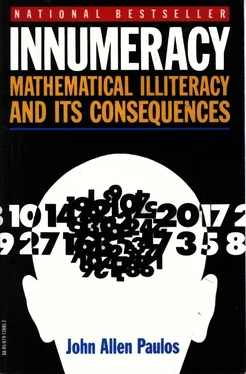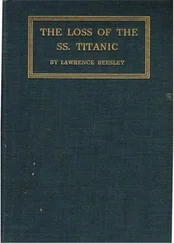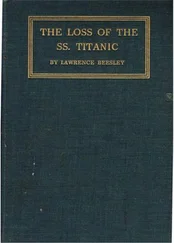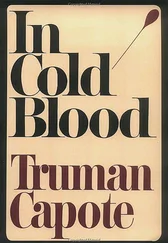For instance, suppose Myrtle isn't overly attractive and is likely to meet only four eligible suitors, and suppose further that these four men are equally likely to come to her in any of the twenty-four possible orderings (24 = 4 x 3 x 2 x 1).
Since 37 percent is between 25 percent and 50 percent, the policy is ambiguous here, but the two best strategies correspond to the following: (A) Pass up the first candidate (25 percent of N = 4) and accept the first heartthrob after that. (B) Pass up the first two candidates (50 percent of N = 4) and accept the first heartthrob after that. Strategy A will result in Myrtle's choosing the best suitor in eleven of the twenty-four instances, while strategy B will result in success in ten of the twenty-four instances.
The list of all such sequential orderings is below, with the number 1 representing, as before, the suitor Myrtle would most prefer, 2 her second choice, etc. Thus, the ordering 3 2 1 4 indicates that she meets her third choice first, her second choice second, her first choice she meets third, and her last choice last. The orderings are marked with an A or a B to indicate in which instances these strategies result in her getting her first choice.
1234 • 1243 • 1324 • 1342 • 1423 • 1432 • 2134(A) • 2143(A) • 2314(A,B) • 2341(A,B) • 2413(A,B) • 2431(A,B) • 3124(A) • 3142(A) • 3214(B) • 3241(B) • 3412(A,B) • 3421 • 4123(A) • 4132(A) • 4213(B) • 423KB) • 4312(B) • 4321
If Myrtle is quite attractive and can expect to have twenty-five suitors, her best strategy would still be to reject the first nine of these suitors (37 percent of 25) and then accept the first heartthrob after that. This could be verified by tabulation, as above, but the tables get unwieldy and it's best to accept the general proof. (Needless to say, the same analysis holds if the person seeking a spouse is a Mortimer and not a Myrtle.)
For large values of N, the probability that Myrtle will find her Mr. Right following this 37 percent rule is also approximately 37 percent. Then comes the hard part: living with Mr. Right. Variants of the model exist with more romantically plausible constraints.
In 1964 in Los Angeles a blond woman with a ponytail snatched a purse from another woman. The thief fled on foot but was later spotted entering a yellow car driven by a black man with a beard and a mustache. Police investigation eventually discovered a blond woman with a ponytail who regularly associated with a bearded and mustachioed black man who owned a yellow car. There wasn't any hard evidence linking the couple to the crime, or any witnesses able to identify either party. There was, however, agreement on the above facts.
The prosecutor argued that the probability was so low that such a couple existed that the police investigation must have turned up the actual culprits. He assigned the following probabilities to the characteristics in question: yellow car-1/10; man with a mustache-1/4; woman with a ponytail- 1/10; woman with blond hair-1/3; black man with a beard-1/10; interracial couple in a car-1/1,000. The prosecutor further argued that the characteristics were independent, so that the probability that a randomly selected couple would have all of them would be 1/10 x 1/4 x 1/10 x 1/3 x 1/10 x 1/1,000 = 1/12,000,000, a number so low the couple must be guilty. The jury convicted them.
The case was appealed to the California supreme court, where it was overturned on the basis of another probability argument. The defense attorney in that trial argued that 1/12,000,000 was not the relevant probability. In a city the size of Los Angeles, with maybe 2,000,000 couples, the probability was not that small, he maintained, that there existed more than one couple with that particular list of characteristics, given that there was at least one such couple-the convicted couple. On the basis of the binomial probability distribution and the 1/12,000,000 figure, this probability can be determined to be about 8 percent-small, but certainly allowing for reasonable doubt. The California supreme court agreed and overturned the earlier guilty verdict.
Whatever the problems of the one in 12,000,000 figure, rarity by itself shouldn't necessarily be evidence of anything. When one is dealt a bridge hand of thirteen cards, the probability of being dealt that particular hand is less than one in 600 billion. Still, it would be absurd for someone to be dealt a hand, examine it carefully, calculate that the probability of getting it is less than one in 600 billion, and then conclude that he must not have been dealt that very hand because it is so very improbable.
In some contexts, improbabilities are to be expected. Every bridge hand is quite improbable. Likewise with poker hands or lottery tickets. In the case of the California couple, improbability carries more weight, but still, their defense attorney's argument was the right one.
Why is it, incidentally, if all the 3,838,380 ways of choosing six numbers out of forty are equally likely, that a lottery ticket with the numbers 2 13 17 20 29 36 is for most people much preferable to one with the numbers 1 2 3 4 5 6? This is, I think, a fairly deep question.
The following sports anomaly has legal implications as well. Consider two baseball players, say, Babe Ruth and Lou Gehrig. During the first half of the season, Babe Ruth hits for a higher batting average than Lou Gehrig. And during the second half of the season, Babe Ruth again hits for a higher average than Lou Gehrig. But for the season as whole, Lou Gehrig has a higher batting average than Babe Ruth. Could this be the case? Of course, the mere fact that I pose the question may cause some misgivings, but at first glance such a situation seems impossible.
What can happen is that Babe Ruth could hit.300 the first half of the season and Lou Gehrig only.290, but Ruth could bat two hundred times to Gehrig's one hundred times. During the second half of the season, Ruth could bat.400 and Gehrig only.390, but Ruth could come to bat only a hundred times to Gehrig's two hundred times at bat. The result would be a higher overall batting average for Gehrig than for Ruth:.357 vs..333. You can't average batting averages.
There was an intriguing discrimination case in California several years ago which had the same formal structure as this batting-average puzzle. Looking at the proportion of women in graduate school at a large university, some women filed a lawsuit claiming that they were being discriminated against by the graduate school. When administrators sought to determine which departments were most guilty, they found that in each department a higher percentage of women applicants were admitted than men applicants. Women, however, applied in disproportionately large numbers to departments such as English and psychology that admitted only a small percentage of their applicants, whereas men applied in disproportionately large numbers to departments such as mathematics and engineering that admitted a much higher percentage of their applicants. The men's admissions pattern was analogous to Gehrig's hitting pattern-coming to bat more often during the second half of the season when getting a hit is easier.
Another counter-intuitive problem involving seemingly disproportionate probabilities concerns a New York City man who has a woman friend in the Bronx and one in Brooklyn. He is equally attached (or perhaps unattached) to each of them and thus is indifferent to whether he catches the northbound subway to the Bronx or the southbound subway to Brooklyn. Since both trains run every twenty minutes throughout the day, he figures he'll let the subway decide whom he'll visit, and take the first train which comes along. After a while, though, his Brooklyn woman friend, who's enamored of him, begins to complain that he shows up for only about one-fourth of his dates with her, while his Bronx friend, who's getting sick of him, begins to complain that he appears for three-fourths of his dates with her. Aside from callowness, what is this man's problem?
Читать дальше












